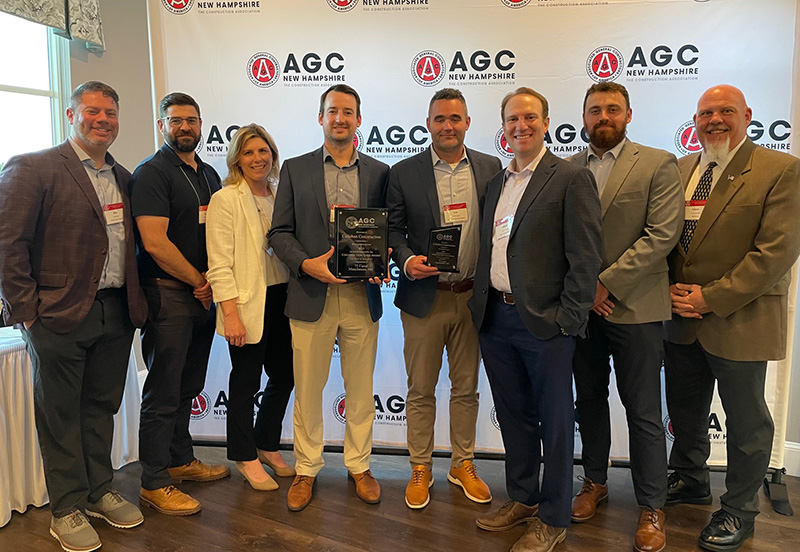News: Construction Design & Engineering
Posted: May 15, 2008
Getting the building you paid for: Incorporating inchstones for large projects
When beginning work on your new building it seems reasonable to expect to occupy a building that has been functionally completed with all components and systems fully installed, started, controlled, balanced, and tested. However, as a commissioning agent on many large projects I can assure you this rarely happens. Most owners move into a building that is still a work in progress and the overlap of systems completion and occupancy invariably has a significant negative impact on both the immediate and lasting performance of the building.
Problems come in the form of high initial levels of occupant complaints and the resulting maintenance costs, as well as long-term performance deficiencies and higher energy costs on the building. All of these problems and their associated costs are inherited by the building owner.
This situation is due to an increasing acceptance of "substantial completion" as meaning only that the occupancy permit requirements have been met. Most owners now accept this view, with the understanding that the "punch-list" will be completed by the contractor. However, from a commissioning (and historical) perspective, substantial completion would additionally require that all components and subsystems of the HVAC system documentation have been completed, started, fully controlled, and balanced.
Once the owner occupies the building, final completion of these systems becomes more difficult and problems will quickly become evident. Performance deficiencies such as insufficient air distribution to certain spaces or failed reheat coil operation could easily go undetected prior to occupancy, but will contribute to excessive maintenance calls upon occupancy. Blatant failures will be immediately noticeable, but many deficiencies like inadequate air or water flow may not be evident under all outdoor (load) conditions and may cause problems to stretch out for months. Meanwhile the system completion process will cause disruptions and complaints from the occupants. An occupant will be exposed to heating or cooling deficiencies, and any anomalies related to power, lighting, or thermal comfort (i.e., anything that they can physically sense). The building can quickly develop a reputation as a "bad" building.
In a recent project in which systems completion occurred 12 months after occupancy (not unusual in my experience), a conservative estimate of unexpected maintenance costs to the owner was more than $150,000! The energy and equipment life costs are more difficult to quantify but are significant as they can add cost over the entire life of the building.
From reviews of many large projects, we discovered a series of indicators that can be used at various stages of the project to predict scheduling delays. These indicators, which we've termed "inchstones" as they work within the existing construction milestones, are carefully chosen to enable the owner to identify potential delays at points early enough in the schedule to correct and maintain the scheduled dates. Inchstones are contractual sub-tasks with associated tangible deliverables which if not completely implemented will directly or indirectly lead to schedule delays and performance shortfalls. Tracking these deliverables during the project provides a finer degree of scheduling oversight for the building owner and gives the project team notification of potential delays early in the project when corrections can be more easily and inexpensively implemented.
Examples of project inchstones during the construction phase of a project can include:
*submittal requirement sheets and approval tracking.
*contractor plans (for installation, startup, balancing, training, etc.).
*point-to-point controls checklists.
*start-up notification requirements.
These documents contain information critical to the proper specification, installation, and performance of equipment, and should be precursors to the proper startup, completion, and acceptance of building systems. Consequently, the lack of these key deliverables at certain points in the project should be an early warning that problems will occur later in the construction cycle. For example, if the schedule indicates that equipment startup is to begin in 2 weeks yet no start-up plans have been submitted, then it is highly unlikely that the startup will be performed correctly. This sets the stage for later equipment problems, project delays, voided warranties, and higher energy and maintenance costs to the owner.
Incorporating inchstones into a construction project is not a major effort. However, making the process work to its potential involves several important steps that the owner should follow:
*Ensure the contract contains the proper inchstones.
*Make your expectations clear to the construction team.
*Collect, organize, and disseminate deliverables.
*Hold the team accountable.
Mike Della-Barba is the director of commissioning services at Environmental Health & Engineering, Inc., Needham, Mass.
MORE FROM Construction Design & Engineering
Nobis Group awards Robinson and Moreira STEM scholarships
Concord, NH Nobis Group, a 100% employee-owned consulting firm specializing in engineering and environmental solutions across the Northeast, has named the recipients of its 2025 STEM Scholarship: Andie Moreira of

Columns and Thought Leadership

Careers in Construction Month focus on training and safety - by Joe Camilo
October is Careers in Construction Month, and rarely has it been more consequential. According to our chapter’s national parent organization, the construction industry needs to attract half-a-million new workers in the coming year to meet demand. Addressing that need is a huge job, but we at ABC MA are trying to do our part.

The design-build advantage: Integrated interior design solutions - by Parker Snyder
When it comes to corporate interior spaces for both commercial and industrial projects, partnering with a design-build firm with in-house interior design services can offer clients many benefits. Unlike traditional delivery methods where interior designers operate independently from the design and construction teams, often creating a longer project timeline as cost negotiations and revisions ensue

The rise of incubators and co-working spaces: The latest in life sciences - by Matt Combs
In recent years, the life science industry has witnessed a shift in how companies operate and innovate. One of the key driving forces behind this transformation is the emergence of incubators and co-working spaces specifically tailored to meet the unique budget and schedule needs of startups.

Ask the Electrician: Is summer a prime time for commercial electrical maintenance?
The answer is “Yes!” While January marks the official new year, many businesses view September as a fresh start. This makes summer an ideal time for commercial property owners to schedule long-term electrical maintenance projects.







